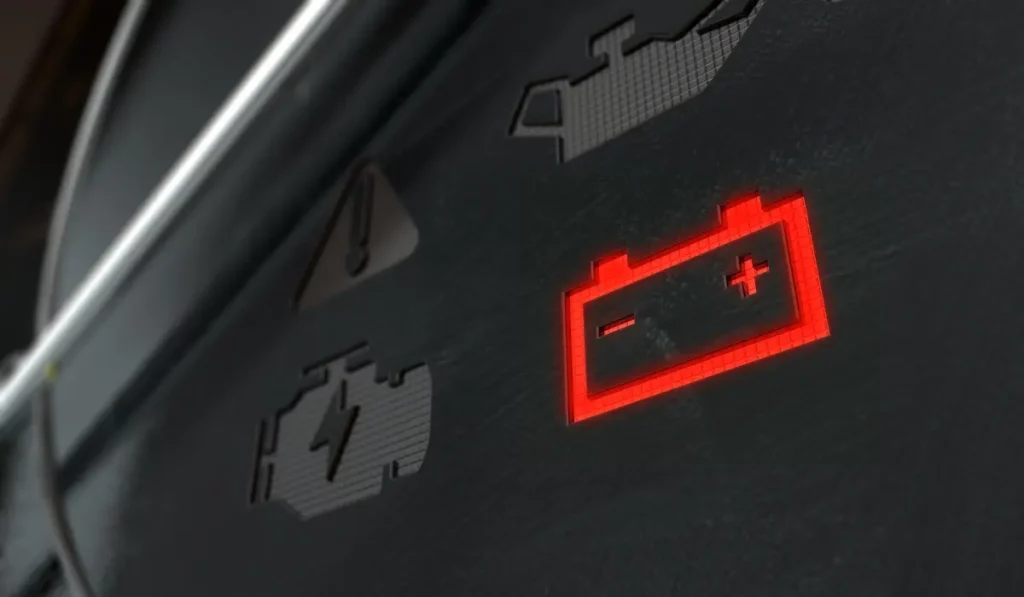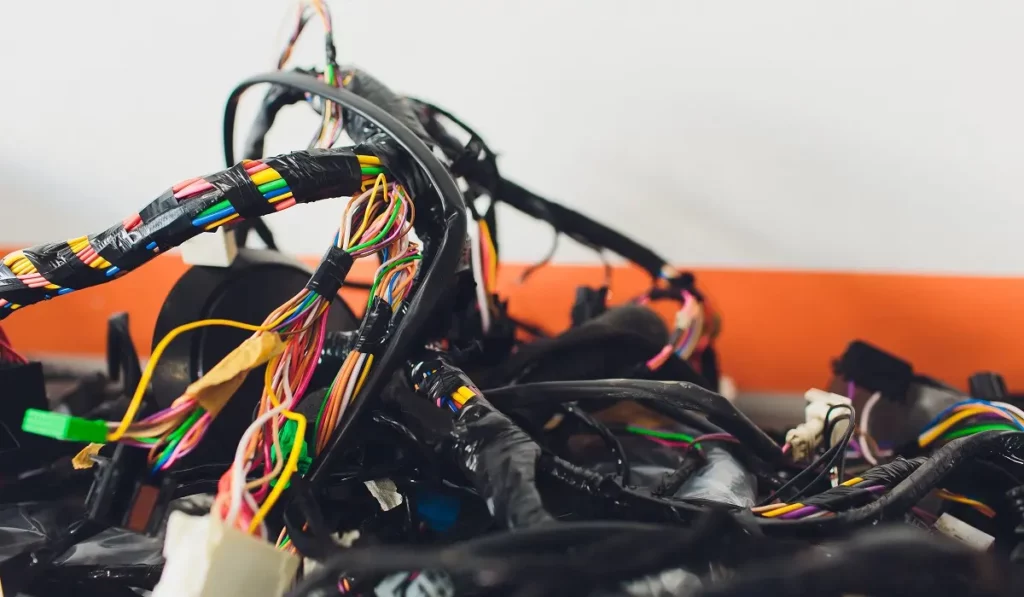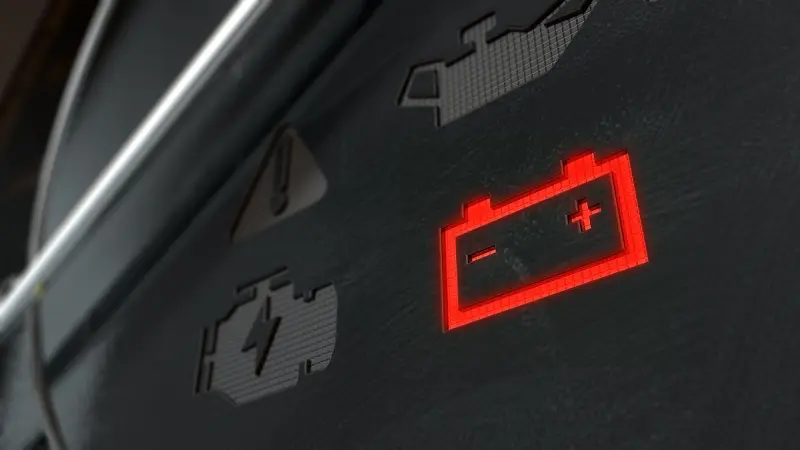Modern vehicles, particularly those equipped with advanced electronic systems, offer us unparalleled convenience and comfort. However, with great technological power comes the challenge of managing intricate electrical systems. This brings us to a concern that many BMW owners have encountered: current drain issues. In this blog post, we will delve into the world of current drain problems in BMW vehicles and shed light on a specific diagnostic code that plays a crucial role in identifying and rectifying these issues – the enigmatic 2DED BMW code.
In the realm of automotive maintenance, few problems are as insidious and potentially frustrating as current drain, also known as parasitic drain. This phenomenon occurs when your vehicle’s electrical components continue to draw power even when the engine is off, eventually leading to a weakened or dead battery. Addressing this issue promptly is paramount to avoid the hassle of unexpected breakdowns and the financial burden of frequent battery replacements.
Our aim here is to provide you with a comprehensive guide to understanding the 2DED BMW code and its significance in the context of current drain problems. By the end of this post, you’ll be equipped with knowledge that not only explains the complexities of current drain but also empowers you to take proactive steps in maintaining your BMW’s electrical health. So, let’s dive into the intricacies of current drain issues and how the 2DED code comes to the rescue.

Understanding Current Drain Issues
In the world of modern vehicles, where electronics are interwoven into nearly every aspect of driving, current drain has emerged as a persistent challenge. Imagine returning to your parked BMW after a few days only to find that the engine won’t start due to a drained battery. This frustrating scenario is often a result of current drain, where certain components continue to draw power even when the vehicle is idle.
Causes of Current Drain
Several factors can contribute to current drain in a BMW:
- Electrical Faults — Wiring issues, corroded connections, or faulty electrical components can result in unintended power draw.
- Malfunctioning Modules — Defective control modules might fail to go into “sleep” mode, leading to ongoing power consumption.
- Aftermarket Installations — Poorly integrated aftermarket accessories like alarms, entertainment systems, or trackers can cause increased current drain.
- Software Glitches — Software bugs or errors in the vehicle’s electronic systems might prevent them from shutting down properly.
Consequences of Ignoring Current Drain:
Allowing current drain issues to persist can lead to a cascade of problems, including:
- Battery Depletion — The most immediate consequence is a drained or weakened battery, resulting in difficulty starting the engine.
- Premature Battery Wear — Frequent deep discharges due to current drain can significantly shorten your battery’s lifespan.
- Electrical Component Damage — Constant power draw can stress electronic components, leading to potential failures over time.
- Inconvenience — Unreliable vehicle starts and unexpected breakdowns can disrupt your daily routine and cause frustration..
Symptoms of Current Drain Problems
Recognizing the symptoms of current drain issues is essential for BMW owners to address potential problems before they escalate. While the 2DED BMW code serves as a diagnostic tool, it’s often the visible signs that prompt owners to investigate what’s going on. Here are some common symptoms to watch out for:
Slow Engine Crank
When starting your BMW, if you notice the engine cranking slowly or struggling to start, it could be indicative of a weakened battery due to current drain.
Frequent Battery Replacements
If you find yourself replacing your BMW’s battery more frequently than expected, it might be due to a recurring current drain issue that hasn’t been resolved.
Warning Lights
Unexplained warning lights on your dashboard, especially those related to battery or electrical systems, could signal an ongoing current drain problem.
Electronic Malfunctions
Malfunctions in electronic components, such as power windows, lights, infotainment system, or central locking, can indicate an issue with the electrical system.
Dead Battery After Short Periods
If your BMW’s battery dies after being parked for a relatively short time, it’s likely that a persistent current drain is at play.
Odd Electrical Behavior
Strange behavior, such as lights flickering when the engine is off or unusual sounds coming from the vehicle, might be connected to an electrical problem.
Unresponsive Accessories
Accessories like power seats, mirrors, or radio failing to function properly might be linked to a current drain issue.
Strong Smell of Burning
A strong burning smell, often accompanied by smoke, could indicate an electrical component overheating due to excessive power consumption.
Recognizing these symptoms can help you catch current drain problems early, potentially saving you from more extensive damage and costly repairs. In the next section, we’ll delve into the systematic diagnostic steps that professionals take to identify and resolve these issues, using the insights provided by the 2DED code.
Diagnostic Steps and Solutions
When faced with current drain problems in your BMW, a systematic approach to diagnosis is crucial. Professionals follow a series of steps to identify the root cause of the issue and implement effective solutions.
- Battery Test — The diagnostic process often begins with testing the battery’s health and voltage levels. A weak or aging battery can exacerbate current drain problems.
- Current Draw Test — Using specialized tools, technicians measure the amount of current being drawn from the battery when the vehicle is turned off. This helps pinpoint excessive power consumption.
- Disconnect and Reconnect — Technicians disconnect and reconnect various components, modules, and systems while monitoring the current draw. If the draw decreases after disconnecting a specific component, it might indicate the source of the issue.
- 2DED Code Interpretation — If the 2DED code appears, technicians interpret it to identify the relevant system or component involved in the current drain.
- Inspection and Testing — Inspecting wiring, connectors, and components associated with the identified system or component is essential. Any signs of damage, corrosion, or malfunction warrant further investigation.
- Software Updates and Resets — In some cases, software glitches or outdated modules might contribute to current drain. Technicians perform updates or resets to rectify these issues.
- Component Replacement or Repair — If a specific component is identified as the culprit, such as a wiring harness connector or something more complex, it needs to be repaired or replaced, restoring the vehicle’s electrical balance.
- Aftermarket Accessories Check — If aftermarket installations are suspected, technicians evaluate their integration with the vehicle’s electrical system and rectify any issues.
- Final Testing — After addressing the identified issues, technicians perform a final current draw test to ensure that the problem has been resolved and that power consumption is within acceptable limits.
Remember, attempting complex electrical repairs without proper expertise can lead to further problems. Sometimes it’s fine to seek professional assistance!
Preventive Measures

Preventing current drain issues in your BMW is not only cost-effective but also ensures a smoother and more reliable driving experience. Here are some preventive measures you can take:
- Regular Maintenance — Follow your BMW’s recommended maintenance schedule. This includes checking the battery, electrical components, and wiring during routine service appointments.
- Battery Care — Keep the battery terminals clean and secure. Corrosion can lead to poor connections and increased resistance, potentially causing current drain.
- OEM Components — When replacing components, opt for Original Equipment Manufacturer (OEM) parts. Aftermarket components might not integrate seamlessly, leading to electrical problems.
- Mindful Parking — If your BMW will be parked for an extended period, consider disconnecting the battery or using a trickle charger to maintain its charge.
- Limit Aftermarket Additions — Be cautious with aftermarket accessories and installations. Ensure they are installed by professionals who understand your BMW’s electrical system.
- Regular Usage — Even if you’re not a frequent driver, occasionally starting and driving your BMW helps keep the battery charged and the electrical system functioning properly.
Taking care of your BMW’s electrical system not only preserves its performance but also extends its lifespan.
Knowing When to Seek Help
When facing current drain problems in your BMW, it’s important to strike a balance between DIY efforts and seeking professional assistance. While some tasks can be tackled by enthusiastic owners, others require specialized knowledge and equipment.
- Unfamiliarity — If you’re not comfortable with electrical systems, it’s safer to let professionals handle the diagnosis and repairs.
- Lack of Tools — Specialized diagnostic tools are essential for accurate assessments and should be left to professionals.
- Limited Experience — Electrical problems can be intricate, and inexperienced attempts might worsen the situation.
While there’s room for DIY involvement, current drain issues often require professional intervention to ensure accurate diagnosis and effective solutions. Consulting experts minimizes risks and ensures your BMW’s electrical system remains in top condition.
Get Quality BMW Parts at Bimmers.com
Understanding the intricacies of current drain issues and the role of the 2DED BMW code can be empowering for BMW owners. By recognizing symptoms, pursuing preventive measures, and knowing when to seek professional assistance, you can maintain your vehicle’s electrical health and enjoy a more reliable driving experience. Remember, a well-maintained electrical system translates to fewer surprises on the road and a BMW that continues to perform at its best. That said, you’ll need quality BMW parts to fix this code and keep your vehicle in perfect working order. Check out our catalog and find exactly that! We offer premium BMW parts at sharp prices.





